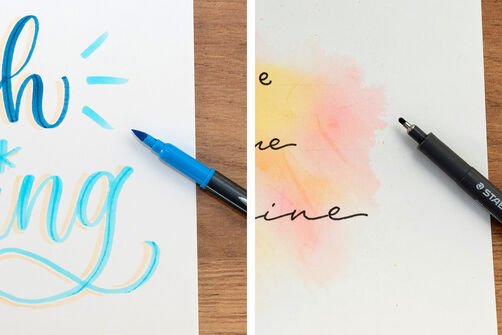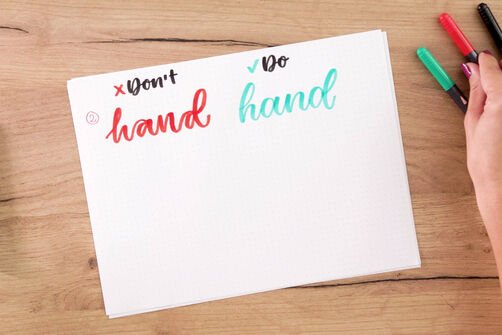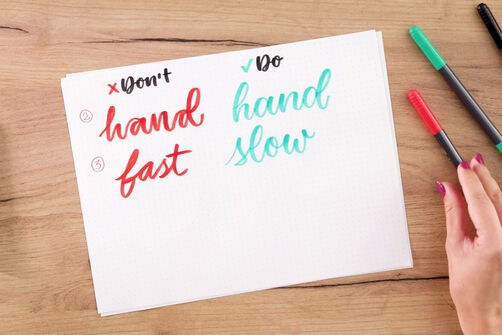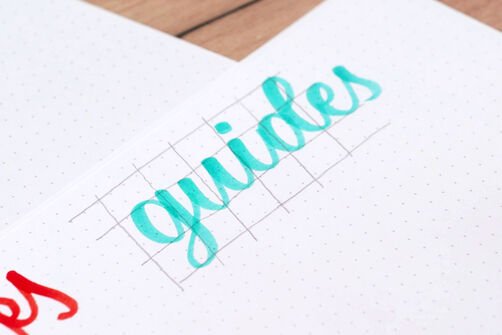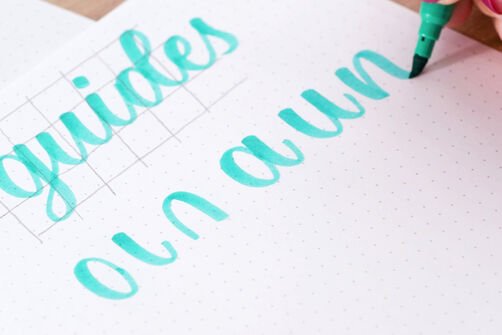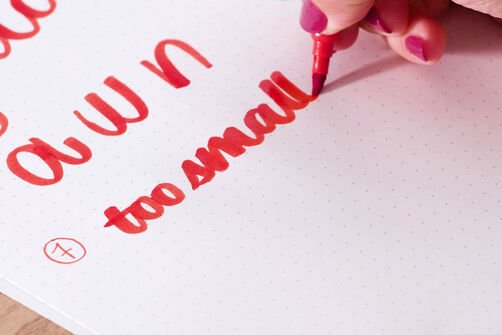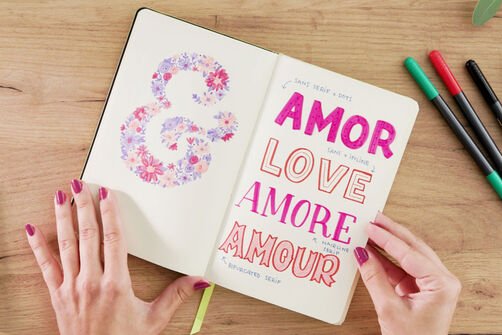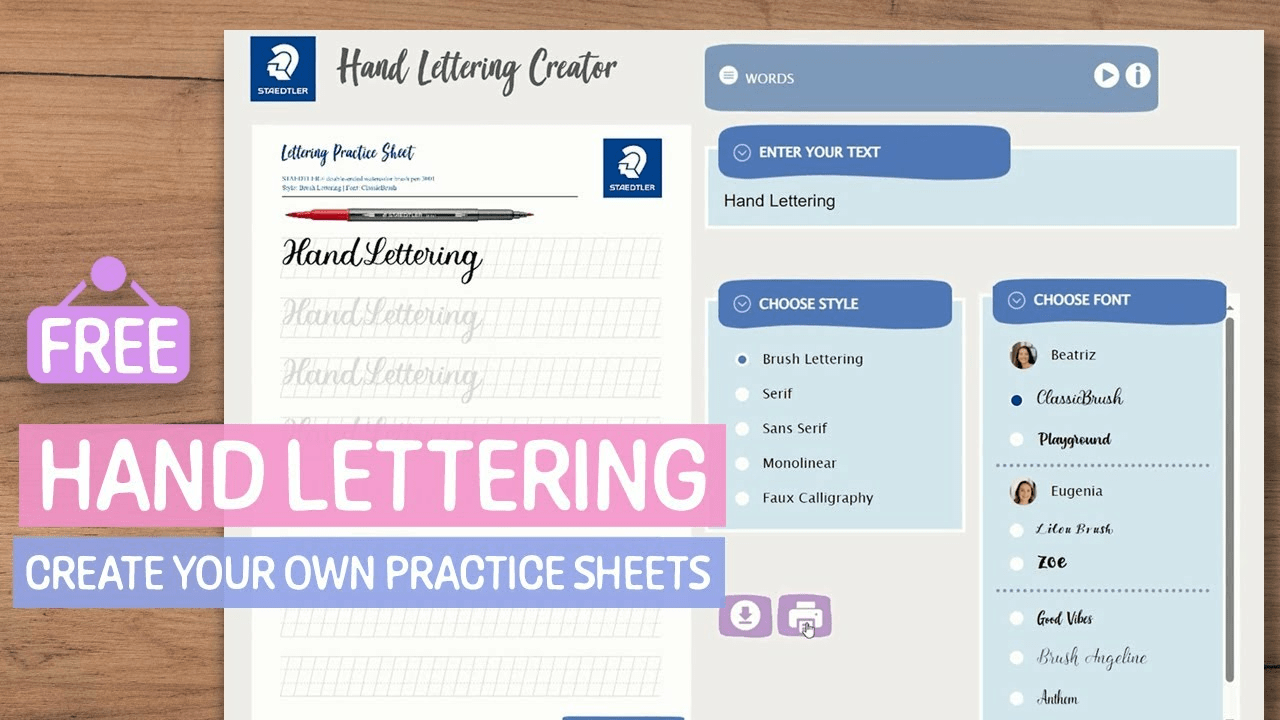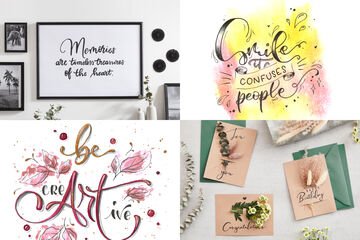Learning hand lettering made easy – with our STAEDTLER Hand Lettering Guide
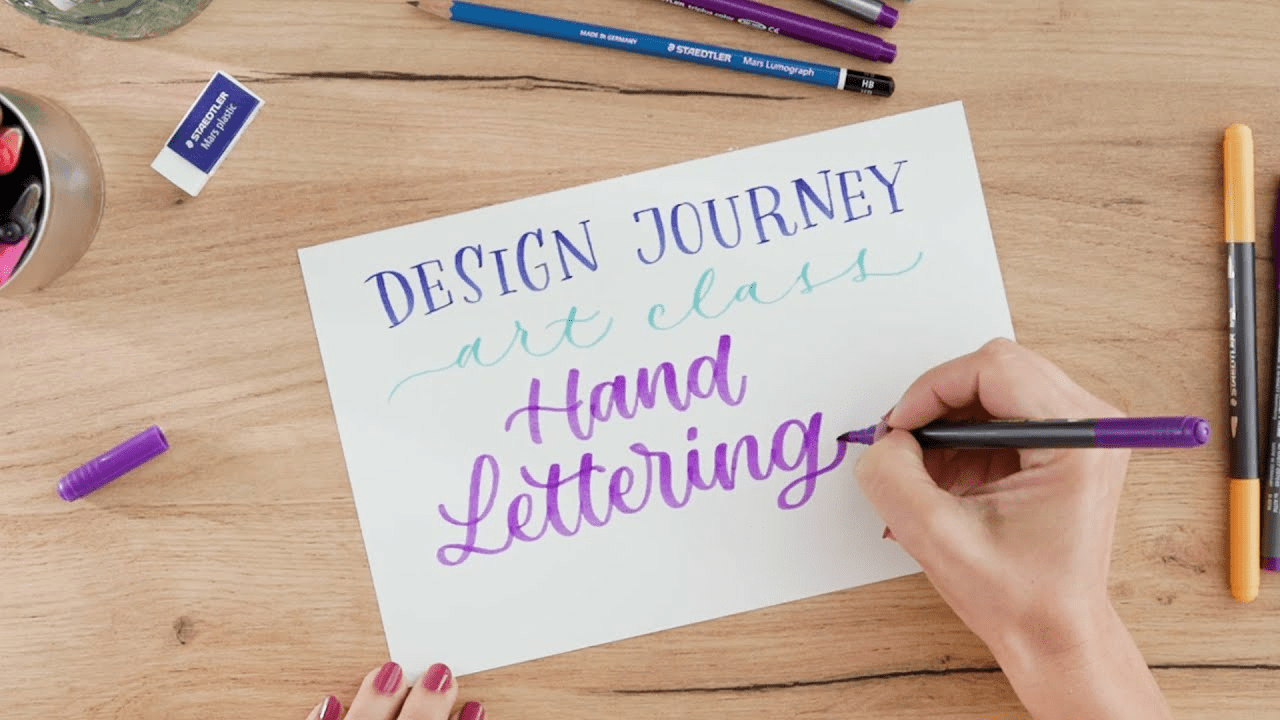
Now quite trendy in the art scene, hand lettering is what everyone is talking about. Hand lettering is the art of creating beautifully written words which are more like works of art than just letters on a page. Creating these works of art will require the right type of paper as well as the right lettering pens and brush pens. In our hand lettering guide – which is specifically designed for beginners – you will learn what ✔ materials are needed to get started. We will also show you which ✔ fonts you can use for hand lettering.
Check out our hand lettering course for beginners and level up your art skills!
A small excursion:
Hand lettering is the art of beautiful writing. Calligraphy or letter art is about arranging letters in an aesthetically pleasing manner. In this way, each letter resembles a small work of art, as the main focus is on its artistic design. The word “lettering” comes from the English word “letter”.
There are many facets to hand lettering, so you can use this art form in a wide variety of projects: such as designing greeting cards, decorations, personalised gifts, book covers, art prints, boards and many other creative projects.
You can use hand lettering to create original birthday wishes, Easter cards or Christmas cards. You can create eye-catching, personalised cards, greeting cards, place cards, etc. which will bring lots of joy to the recipient, especially because they will appreciate how much work and effort went into the creation of your hand lettering design. You can also create individual lettering posters for your home.
The origin of hand lettering lies in the art of beautiful writing – calligraphy – and describes the flowing transition between painting and writing. The biggest difference between the two disciplines is that hand lettering involves drawing letters, while calligraphy focuses on the artistic writing of letters and characters.
The term hand lettering refers to all visual art forms that deal with the artistic design of letters. Hand lettering allows you to combine different fonts and styles and use different pens types. There are many facets to hand lettering, so you can use this art form in a wide variety of projects: whether for designing greeting cards, decorations, personalised gifts, book covers, art prints, boards and many other creative projects.
- In brush lettering, you use brushes and brush pens to draw lines with varying line widths. The more pressure you apply to the tip of the brush, the thicker the lines. Brush lettering is one of the most popular and widespread forms of hand lettering.
- For faux calligraphy, you can use a conventional fineliner, a gel roller, or a fibre-tip pen. Faux calligraphy imitates brush lettering so that the letters look as if they have been drawn with quills or brush pens.
- Calligraphy is the art of beautiful writing, performed with the help of pen and ink.
- Typography refers to the art and study of writing. This involves the artistic design and embellishment of legible text.
- Bounce lettering: With bounce lettering, you give individual letters a dynamic look that makes them appear as if they are jumping off the page.
- Serif and sans serif: With serif, letters are provided with leading and trailing strokes, whereas with sans serif, leading and trailing strokes are omitted.
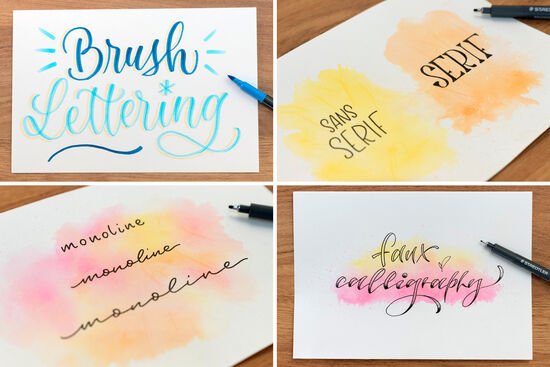
In hand lettering, letters are elaborately drawn and embellished by hand. You can create different fonts in numerous styles depending on the stroke angle and width of the lines, auxiliary lines, and horizontal strokes. The term “hand lettering” refers to various lettering styles – including 🖌 brush lettering, 🖌 faux calligraphy, 🖌 serif and sans serif as well as 🖌 bounce lettering.
► You can find out more about this in our free hand lettering course or in the following videos.
Learn hand lettering:
How to get started
In this video, we introduce you to the most important products, basic hand lettering techniques and our helpful Hand Lettering Creator Tool with numerous exercises and alphabets – guaranteed to make your journey into the world of hand lettering design a complete success!

In this lettering course, you will receive detailed hand lettering instructions and valuable tips on how to implement a wide variety of writing styles. We will also show you which materials are part of the basic equipment and which techniques you can use. In our sub-course on “Alphabets, words and compositions”, you will receive templates for various layouts and compositions as well as initial instructions on how to decorate and embellish lower-case and upper-case letters and whole words.
Before getting started
Before you get started with the topics “Hand lettering materials”, “Hand lettering techniques”, “Alphabets, words, compositions”, and “Advanced techniques & inspirations” below, we recommend the following link for some helpful information to help you get started in the world of hand lettering:
► The most common mistakes and how you can avoid them
► All about our Hand Lettering Creator
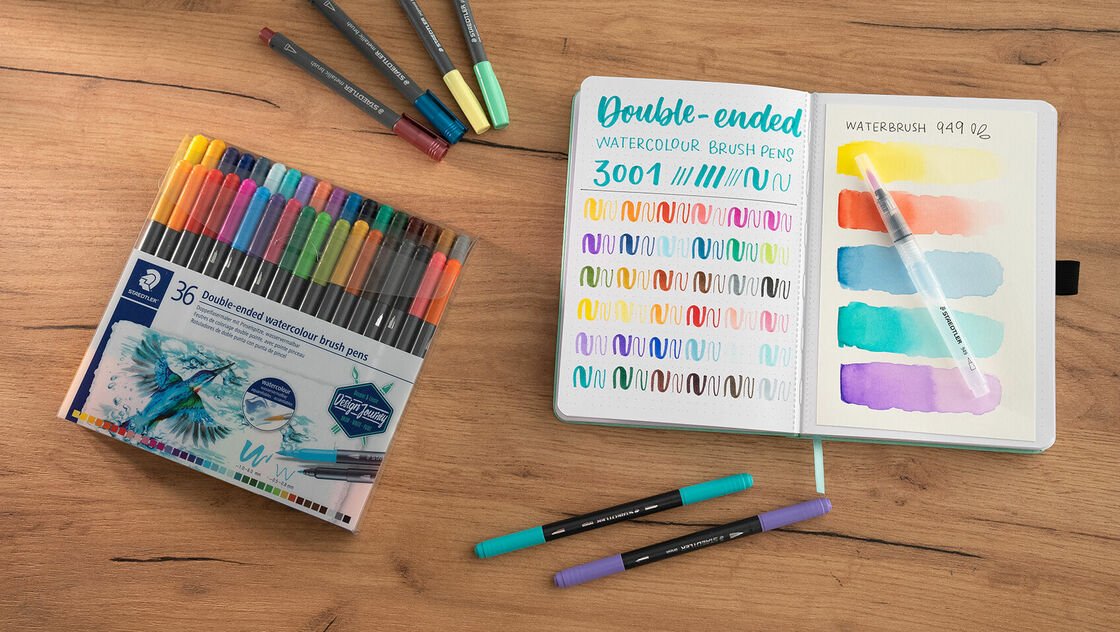
Hand lettering materials
In this part of the course, you will find out which materials and tools are absolute must-haves in your hand lettering toolbox.
Hand lettering techniques
Learn the most important hand lettering techniques: so that you can create individual characters and let your creativity run free.
Alphabets, words, compositions
In this part of the course, you will take a look at the alphabets of different writing styles, individual words, compositions, layout, and decorative elements.
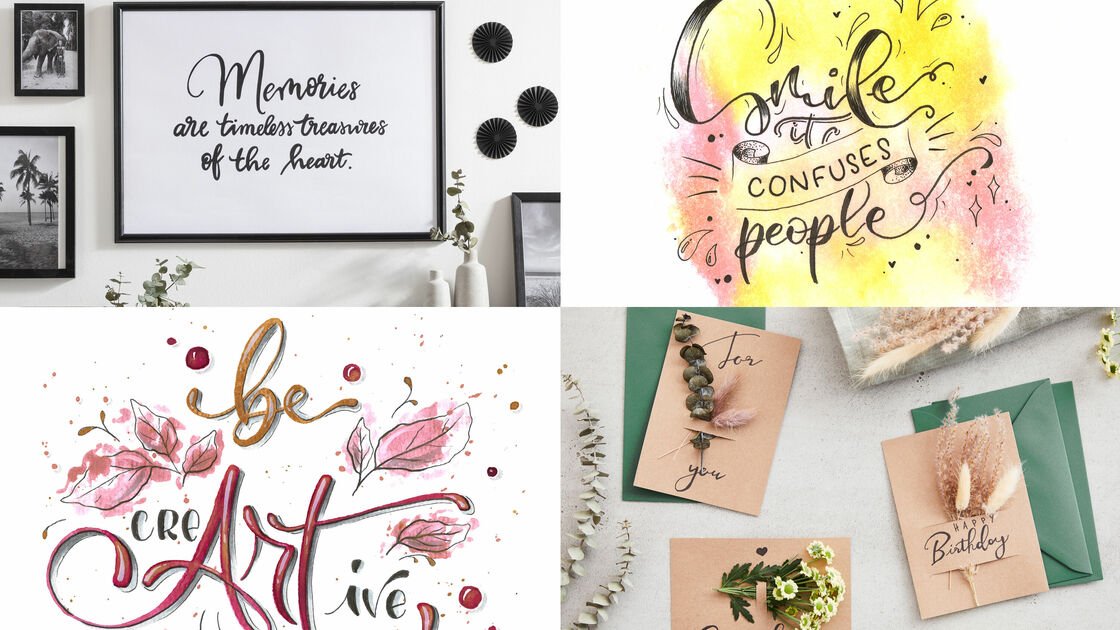
Advanced techniques & inspiration
Discover advanced hand lettering techniques as well as creative templates and tutorials for creating a wide variety of letterings.
Before getting started:
Learn hand lettering fonts: Typical beginner mistakes
Before you dive into our online hand lettering course for beginners, you should watch the following video. We explain typical mistakes that beginners often make when they want to learn hand lettering, and show you how to avoid and correct these mistakes. This video is therefore a helpful learning resource for beginners and all those who are already lettering and looking to improve their technique.
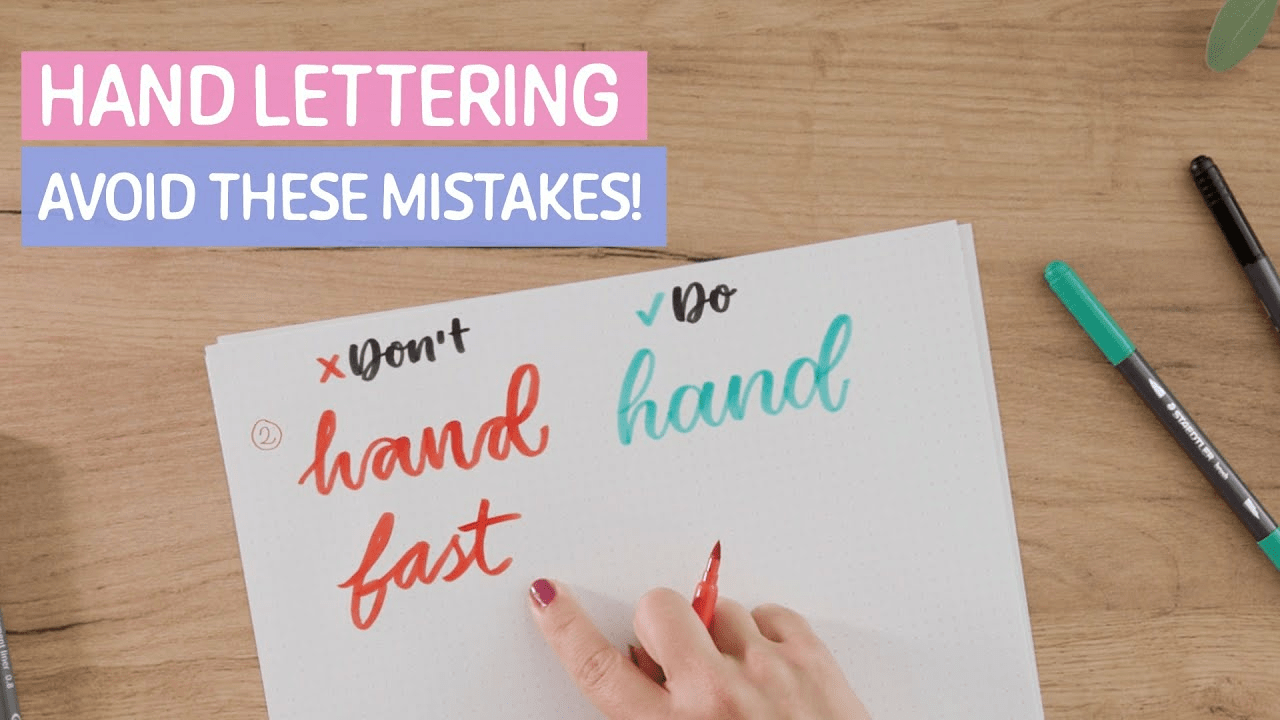
These are the nine most common mistakes that beginners make when hand lettering. These mistakes can be prevented by using our Hand Lettering Generator – the tool introduces you to the basics of hand lettering and offers you numerous practice sheets, templates and designs to learn the different fonts.
Learn hand lettering with the creator from STAEDTLER
With our free Hand Lettering Creator, you have instant access to a variety of: ✔ Basic exercises ✔ individually generated exercise sheets for alphabets & words ✔ with ready-made templates. Discover our hand lettering creator now and give your hand lettering skills an upgrade!
You might also be interested in:
Advanced techniques & inspiration

The STAEDTLER Design Journey Art Class
Have you created your first hand lettering motifs and would like to share them with others? Link us with #myDesignJourney on social media!
If you are also interested in other painting and drawing techniques, take a look at our other Design Journey Art Classes. Here you will find online courses on topics such as:
- Learn to paint with watercolours with Nadja Illert
- Drawing animals with Sine Hagestad
- Perspective drawings with Dan Beardshaw
- Drawing with ink and watercolours with Kalliopi Lyviaki
- Drawing techniques with coloured pencils with Melanie Übleis
